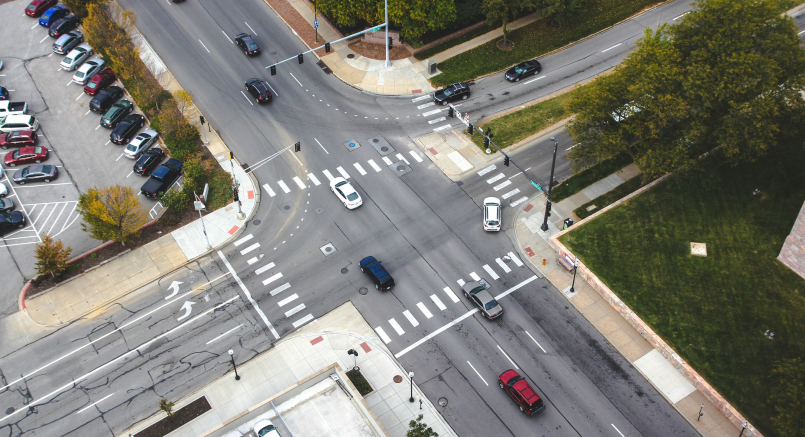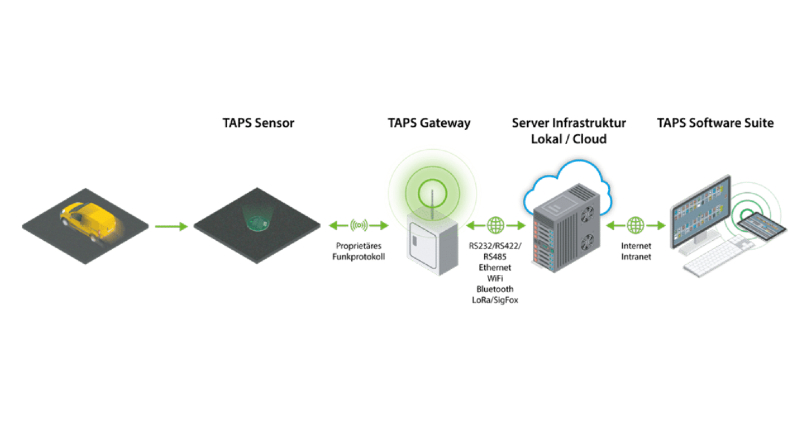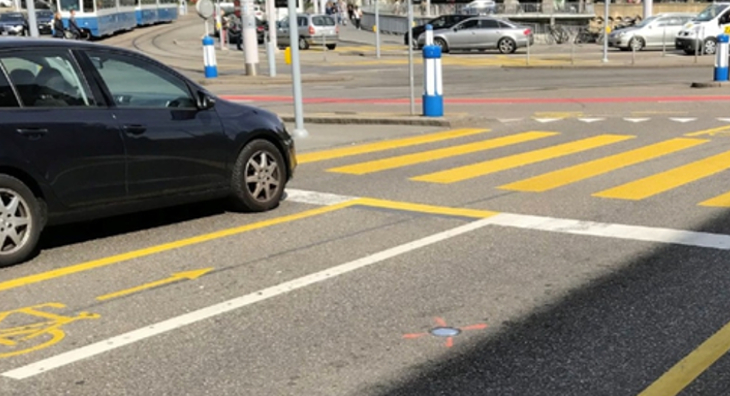How does intelligent parking work?

What is meant by this is the targeted routing of cars to free parking spaces. This is achieved with sensors and a lot of smart technology. The TAPS traffic and parking management system developed by LTS AG makes intelligent parking easier than ever.
Why is intelligent parking necessary?

The search for a parking space is a burden on countless people every day. This doesn't just affect drivers who make one round after another in search of a free parking space. It also affects road users who still have a longer drive ahead of them. Because they are confronted with traffic jams and delays due to the excessive parking search traffic. As a result, they also arrive late at their destination.
On top of that, the search for parking spaces costs a lot of money. According to a German study, each motorist loses around 900 francs a year looking for a parking space. In addition to the lost time, which could also be used profitably, gasoline consumption is a cost factor. The economic costs for the additional burden on the environment are also included in the calculation.
In any case, the CO2 emissions of the cars looking for parking spaces and the slow traffic they cause are considerable. Yet all this can be reduced in a fairly simple way: through intelligent parking.
How can intelligent parking be implemented as simply as possible?

Parking guidance systems that guide cars to available parking spaces have been around for some time. However, the technology they use is costly to install and maintain. This is because it is based on induction loops. To embed them in the ground, the road must be torn up. This is time-consuming and requires a lot of manpower.
The TAPS Sensors from LTS are much easier to install. They are extremely compact and can be placed in the asphalt with a simple drill hole. Safety glass ensures that they are protected from any environmental influences. These include:
Die TAPS Sensoren sind energieautark, benötigen also keine externe Stromzufuhr. Befindet sich ein Sensor im Boden, dann erkennt er, ob sich über ihm ein Auto befindet oder nicht. Diese Information übermittelt er per Funk an das TAPS Gateway. Ein einzelner Gateway kann die Daten von bis zu 64 Sensoren in einer Distanz von maximal 150 Metern sammeln.
Die Daten, die der Gateway von den Sensoren erhält, überträgt er schliesslich an die TAPS Software. Sie ist das Herzstück für intelligentes Parken. Denn die Software lässt den Nutzer detailgenau erkennen, wann welche Parkplätze wie lange genutzt werden. Dies ist überaus hilfreich für das Parkplatzmanagement.
In addition, the data can be used in various ways. For example, it can be used to supply parking guidance systems that inform drivers where they can find free parking spaces. Light signals can also be used in parking garages to indicate which parking spaces are available and which are occupied.
Ceiling sensor for intelligent parking in parking garages
Speziell für den Einsatz in Parkhäusern haben wir den TAPS ceiling sensor entwickelt. Dabei kann sogar auf die Bohrung verzichtet werden, die für die Installation der Bodensensoren notwendig ist. Stattdessen werden die Sensoren an der Decke platziert. Dort werden sie mit der Stromversorgung verbunden.
The ceiling sensors also detect cars - but in their case, cars that are underneath them. As with the floor sensors, their detection rate is at least 99 percent. Transmission of the data to the gateway works in the same way as for the floor sensors.
LTS AG: Innovative solutions for simplified traffic routing

Wir nutzen die innovative Hardware- und Software-Entwicklung, um dem Problem der zunehmenden Auslastung der Strassen Herr zu werden. TAPS lässt sich nicht nur für intelligentes Parken einsetzen. Es kann auch zur smarten Steuerung des Verkehrs verwendet werden.
Die durch die Sensoren gewonnenen Daten können beispielsweise genutzt werden, um den Verkehrsfluss zu beschleunigen. Fahrzeuge werden auf Strassen geleitet, die derzeit weniger ausgelastet sind, oder werden von Staus und zähflüssigem Verkehr ferngehalten.
City planners can also use TAPS to optimize infrastructure and plan meaningful new traffic connections. Due to the simple installation of the sensors, the system can be easily expanded at any time.





)
)